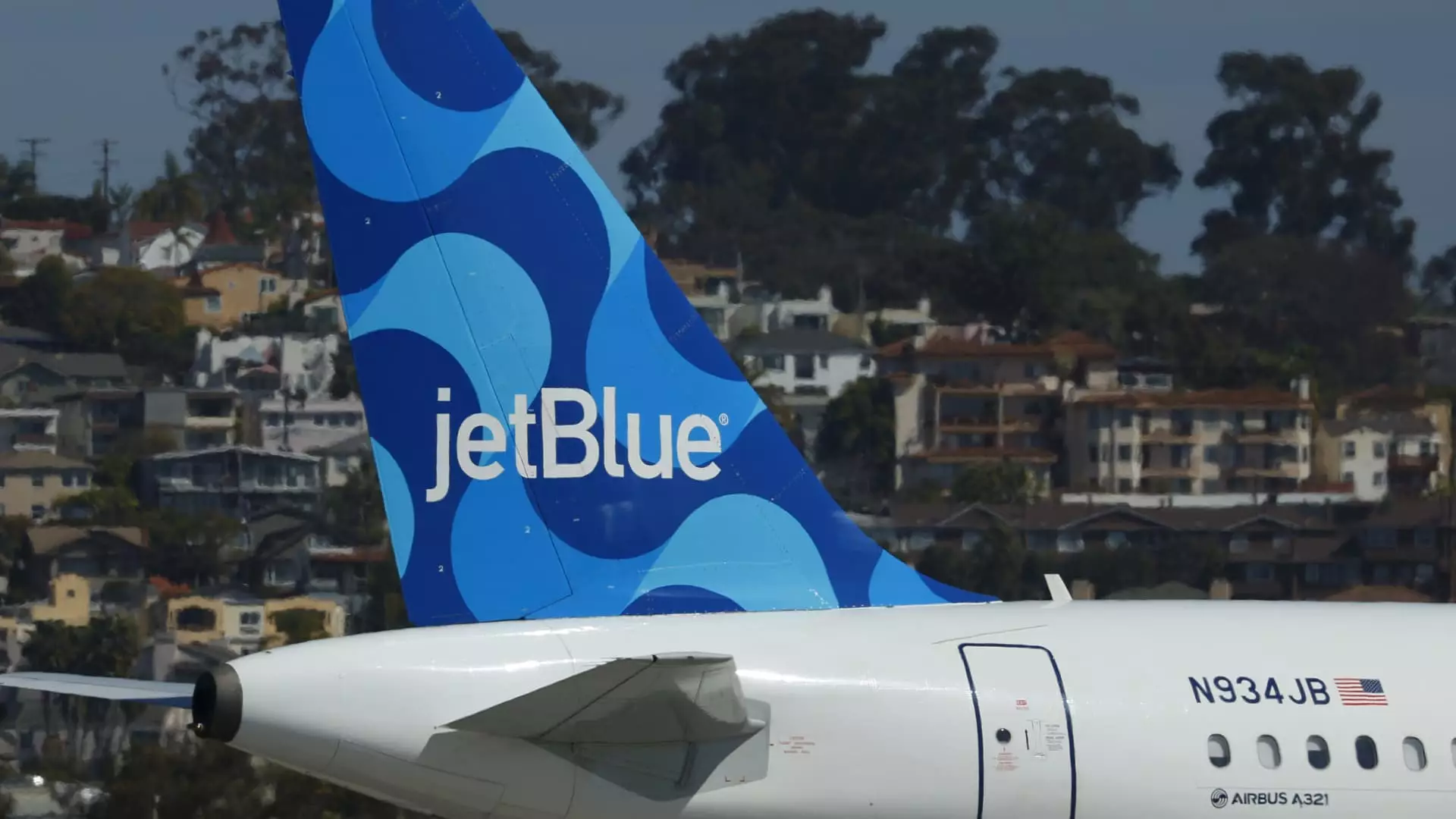JetBlue Airways is currently experiencing a tumultuous phase marked by unexpected declines in travel demand. CEO Joanna Geraghty expressed her concerns about the airline’s financial future in a candid memo to staff, indicating that meeting break-even operating margins this year seems increasingly improbable. The ripple effects of weaker-than-anticipated bookings continue to challenge JetBlue, dragging it further from profitability. While addressing the personnel, Geraghty struck a hopeful tone by suggesting that demand may eventually rebound. However, it is evident that the airline’s road to recovery will be fraught with hurdles.
Therein lies the burden of relying on borrowed funds—a precarious position that most airlines dread. This acknowledgment signifies more than just a strategy for survival; it exposes the underlying vulnerabilities of the travel sector and places JetBlue in a delicate balance of managing costs while striving for a rebound.
Strategic Adjustments and Cost-Cutting Measures
In light of these challenges, JetBlue is swiftly taking measures to recalibrate its operations. Plans to cut off-peak flights and eliminate unprofitable routes reflect a more aggressive approach to cost management. Additionally, the decision to halt renovations on outdated Airbus A320 jets indicates a prioritization of short-term financial health over long-term enhancements. By redirecting resources towards more essential operations, JetBlue seems to understand that immediate survival is vital before they can fully invest in their future.
Moreover, the re-evaluation of hiring plans and potential consolidation of leadership roles resonate with the industry’s ongoing trend of optimization. As travel fare prices dip—exemplified by a 7.3% decline in May compared to last year—airlines that remain agile in adapting to market dynamics will likely fare better. JetBlue’s actions reflect a proactive stance in navigating a fickle market, emphasizing the need for adaptability in a landscape known for its unpredictability.
Seeking New Avenues for Growth
Despite the bleak current scenario, JetBlue is keen on seizing growth opportunities. The failed acquisition of Spirit Airlines was a significant blow to their expansion ambitions, compounded by the judicial roadblocks against their alliances with American Airlines. Nevertheless, JetBlue seems resolute in finding alternative ways to thrive—evidenced by its recent partnership with United Airlines. This collaboration allows the two carriers to offer a broader range of services to customers, including flights and frequent flyer programs.
Geraghty also underscored the sustained investment in premium-class amenities, which positions JetBlue as a competitive player in a lucrative segment of the travel market. The aspiration to enhance the onboard experience with first-class seating and dedicated airport lounges demonstrates JetBlue’s commitment to attracting discerning travelers. This tactile approach proves that in the realm of commercial aviation, investing in service quality can create a valuable edge, even during turbulent times.
Ultimately, JetBlue’s response to current challenges encapsulates an essential lesson in the airline industry: resilience in strategy and the willingness to adapt are crucial. As they navigate through financial uncertainties, JetBlue’s focus on cost management and new partnerships showcases an optimism that may not materialize immediately but is certainly necessary for establishing a robust foundation moving forward.

